Not that long ago if you wanted a performance motorcycle, you bought a sportbike. And then you paid the price in terms of back and wrist pain. Thankfully, these days you can get pain-free performance from any number of naked standards. From the fire-breathing Aprilia Tuono V4 1100 all the way down to the fun and famously frisky Yamaha FZ-07, the naked-bike category is probably the most practical class in motorcycling.
Suzuki's contribution to the group is the GSX-S750 and GSX-S1000 models. The GSX-R750-based GSX-S750 has been a hit in Europe for the better part of a decade, and in 2015 Suzuki opted to bring it stateside. For 2018 (yep, like the Star Venture and Indian Scout Bobber, the GSX-S has been introduced as an early 2018 model) the bike got some appealing updates, and I was lucky enough to get the chance to ride it. As for the 1000, that's covered in a caption below. We won't get to ride that bike for another few weeks.
THE TECH As mentioned, the GSX-S750 is loosely based on the 2005 GSX-R750, with a massaged motor and a unique chassis. For 2018 the engine got vent holes between the cylinder sleeves to reduce internal pumping losses. In layman's terms, that means the pistons spend less effort shoving air around inside the engine and more effort turning the rear wheel. Mix in a new exhaust and the usual ECU updates and Suzuki says the motor now makes 8 more horsepower for a total claimed output of 112.6 hp at 10,500 (compared to 104.5 hp at 10,000). Expect to see a bit over 100 hp at the rear contact patch, roughly the same as Yamaha's 847cc FZ-09.
Other changes include technology that's becoming ubiquitous at Suzuki and in the market, namely the Easy Start system and Low RPM Assist feature that we've seen on the SV650 and GSX-S1000, plus ABS and multi-level traction control. ABS is only available on the GSX-S750Z model, which also has blacked-out paint instead of the standard bike's red or blue color.
Speaking of brakes, they’ve been upgraded substantially. Axial-mount, two-piston Tokico calipers are replaced by radial-mount, four-piston Nissins clamping big, 310mm wave rotors. That kind of equipment was status quo on superbikes just a few years ago, and we’re pleased to see it on a bike in this category and at this price point.
The fork is also new, a 41mm KYB with springs in both legs but damping circuitry in the left only. The fork and shock are both adjustable for spring preload, but nothing else. Rounding out the changes for 2018 are a new all-digital dash, tapered-aluminum handlebar, revised bodywork, and a restyled swingarm and ten-spoke wheels with Bridgestone S21 tires.
All those changes and upgrades push the price up a tad, from $7,999 to $8,299, right in line with the $8,999 Yamaha FZ-09 and $8,399 Kawasaki Z900.
THE RIDE Gazing ahead over the glimmering paint of the tank at the cockpit and the tidy dash and anodized fork caps, the GSX-S looks and feels high quality. Suzuki definitely upped the aesthetic on this model, upgrading parts like the handlebar (previously a 7/8-inch steel piece), swingarm, and wheels to give the bike a more premium appearance. The riding position is exactly what you'd expect from putting a high bar on a sportbike—it's comfortably neutral, with just a slight forward cant.
With the Easy Start feature, starting the bike doesn’t require holding the starter button down, but merely tapping it. The ECU registers your request and cranks the starter until the engine fires, at which point it lopes and growls beneath you with classic inline-four character. Also classic is the width of the tank, which as on all GSX-Rs (except the redesigned and significantly narrower 2017 GSX-R1000) tends to splay your knees out.
Many bikes now feature a “slip-and-grip” clutch that yields a light clutch pull. Not the GSX-S. Lever pull is heavy, which I actually prefer since I think it offers more tactile feedback about the friction zone. Easing out the clutch, the Low RPM Assist feathers the throttle plates to keep the revs from dipping as the clutch engages. On the torquey SV650 it works, but on the GSX-S you still need to slip the clutch and pour on gas as you leave stops—the inline four just doesn’t make much torque at low revs.
The motor pulls well through the midrange and comes alive above 8,000 rpm, where there’s an exciting top-end rush. But as with the previous bike the power tapers off up top before kissing the limiter around 11,500 rpm. You’ll get a nice classic GSX-R howl at high engine speeds, but not necessarily arm-stretching thrust. The bike’s power figure is right there with machines like the FZ-09, but the Suzuki’s claimed curb weight of 465 pounds is more than 30 lbs. heavier which likely contributes to the less-lively character. Don’t expect to be doing any throttle-only power wheelies.
In the lower gears you’ll get a fair amount of buzz in the footgeps (starting at around 5,000 rpm) and seat (starting at around 7,000 rpm), but in sixth on the highway the motor is mercifully smooth, and has solid roll-on power. The handlebar leans you forward just enough to balance the wind blast up to about 75 mph.
The new brakes work great, with loads of stopping power and good feel. There’s no ABS on the base model (that’s reserved for the S750Z mentioned earlier and described in a caption below), which is unfortunate given that this bike is largely aimed at new or less experienced riders. Still, manufacturers are always looking to save weight and expenses, and ABS is an easy way to cut both.
Suspension action is definitely on the firm side, which is opposite what you'd expect for any streetbike that's not a race replica. A stiffer fork and shock mean a fairly rough ride on bumpy roads, but it also means less brake dive, less rear-end squat on the gas, and good feedback from both contact patches. If you're a heavier rider (over 200 lbs.), prefer a firmer ride (like my coworker Zack Courts), or appreciate feeling everything the tires touch, you'll dig this setup. Presumably part of the reason riders will choose the GSX-S is because of its sportbike DNA, and those genetics are evident in the suspension action.
Around town and in the twisties the bike feels compact, light, and responsive, but handling is a bit blunted, especially when making rapid direction changes. Overall the GSX-S is a fun package with enough inline-four sportbike feel and performance to keep you entertained, and ample comfort and real-world power to be useful as an everyday streetbike.
FINAL WORDS Compared to the outgoing GSX-S750, there's no doubt this is a better bike. The increased engine performance as well as the upgraded brakes, added electronic features, and premium-feel parts like the handlebar, wheels, and swingarm really up the Gixxess' game. All for just $300 more than the previous-gen GSX-S. Nice work Suzuki.
My only substantial complaint about the bike is its lack of low-end torque and overall uninspiring performance. Those are fairly damning words given this bike’s heritage, and I feel obligated to acknowledge that my disappointment stems from being spoiled by more powerful and rambunctious bikes like the Yamaha FZ-09 and Kawasaki Z900. True, those bikes benefit from more displacement (they’re 847cc and 948cc, respectively), but they are in the same category and price range as the GSX-S, so they’re going to get cross shopped.
But maybe “rambunctious” isn’t what everyone is after. Not everyone is after a purebred sportbike, that’s for sure. For those that want sportbike DNA and styling, as well as fairly sporty performance and a sporty sound, the GSX-S750 ticks all the right boxes.











/cloudfront-us-east-1.images.arcpublishing.com/octane/I5DFNZ3MKFGMF2VM65N5VNQIBY.jpg)
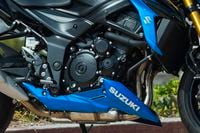

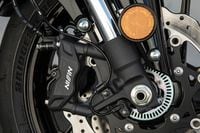
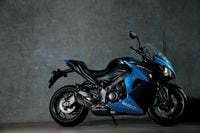
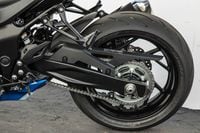

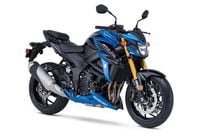
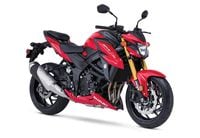
/cloudfront-us-east-1.images.arcpublishing.com/octane/TNOU5DNE2BC57MFPMGN2EIDXAM.jpg)
/cloudfront-us-east-1.images.arcpublishing.com/octane/GTCXACQGJ5HAPDTGWUQKDEH44E.jpg)
/cloudfront-us-east-1.images.arcpublishing.com/octane/S35YGSEMEZB4BLTDJTSZPF4GLA.jpg)
/cloudfront-us-east-1.images.arcpublishing.com/octane/5UOT6HPX2JFMRJAX6EH45AR4MQ.jpg)
/cloudfront-us-east-1.images.arcpublishing.com/octane/OKWOJWAKP5EP3OACCRRWPCIX2Q.jpg)
/cloudfront-us-east-1.images.arcpublishing.com/octane/2WF3SCE3NFBQXLDNJM7KMXA45E.jpg)
/cloudfront-us-east-1.images.arcpublishing.com/octane/G4MG6OUCJNBSHIS2MVVOTPX65E.jpg)
/cloudfront-us-east-1.images.arcpublishing.com/octane/IIGGWFOTOJGB7DB6DGBXCCMTDY.jpg)
/cloudfront-us-east-1.images.arcpublishing.com/octane/QSTCM6AVEZA5JJBUXNIQ3DSOF4.jpg)
/cloudfront-us-east-1.images.arcpublishing.com/octane/U4I7G625B5DMLF2DVIJDFZVV6M.jpg)
/cloudfront-us-east-1.images.arcpublishing.com/octane/B6XD6LS6IVCQPIU6HXDJSM3FHY.jpg)
/cloudfront-us-east-1.images.arcpublishing.com/octane/ICL63FEDDRDTTMINYICCEYGMDA.jpg)
/cloudfront-us-east-1.images.arcpublishing.com/octane/FCGZHQXRBZFLBAPC5SDIQLVF4I.jpg)
/cloudfront-us-east-1.images.arcpublishing.com/octane/WNOB6LDOIFFHJKPSVIWDYUGOPM.jpg)

/cloudfront-us-east-1.images.arcpublishing.com/octane/X33NU3E525ECRHXLNUJN2FTRKI.jpg)
/cloudfront-us-east-1.images.arcpublishing.com/octane/6KKT5NNL2JAVBOXMZYS5ZO76YA.jpg)
/cloudfront-us-east-1.images.arcpublishing.com/octane/J5RKG5O455GMPGQRF2OG6LRT7A.jpg)
/cloudfront-us-east-1.images.arcpublishing.com/octane/GX2CIZKQVRH2TATDM26KFG2DAE.jpg)
/cloudfront-us-east-1.images.arcpublishing.com/octane/ZWIDYSAKQZHD5BHREMQILXJCGM.jpg)
/cloudfront-us-east-1.images.arcpublishing.com/octane/CYUHJZCTSJCH3MRAQEIKXK7SCQ.jpg)
/cloudfront-us-east-1.images.arcpublishing.com/octane/LKOFINY56FCXJCANJ5M7ZDQUBY.jpg)
/cloudfront-us-east-1.images.arcpublishing.com/octane/4NBPDACMWJH63JQYJVK3QRBDZI.jpg)
/cloudfront-us-east-1.images.arcpublishing.com/octane/KKHQHRR3FJGX7H2IPU6RALMWG4.jpg)